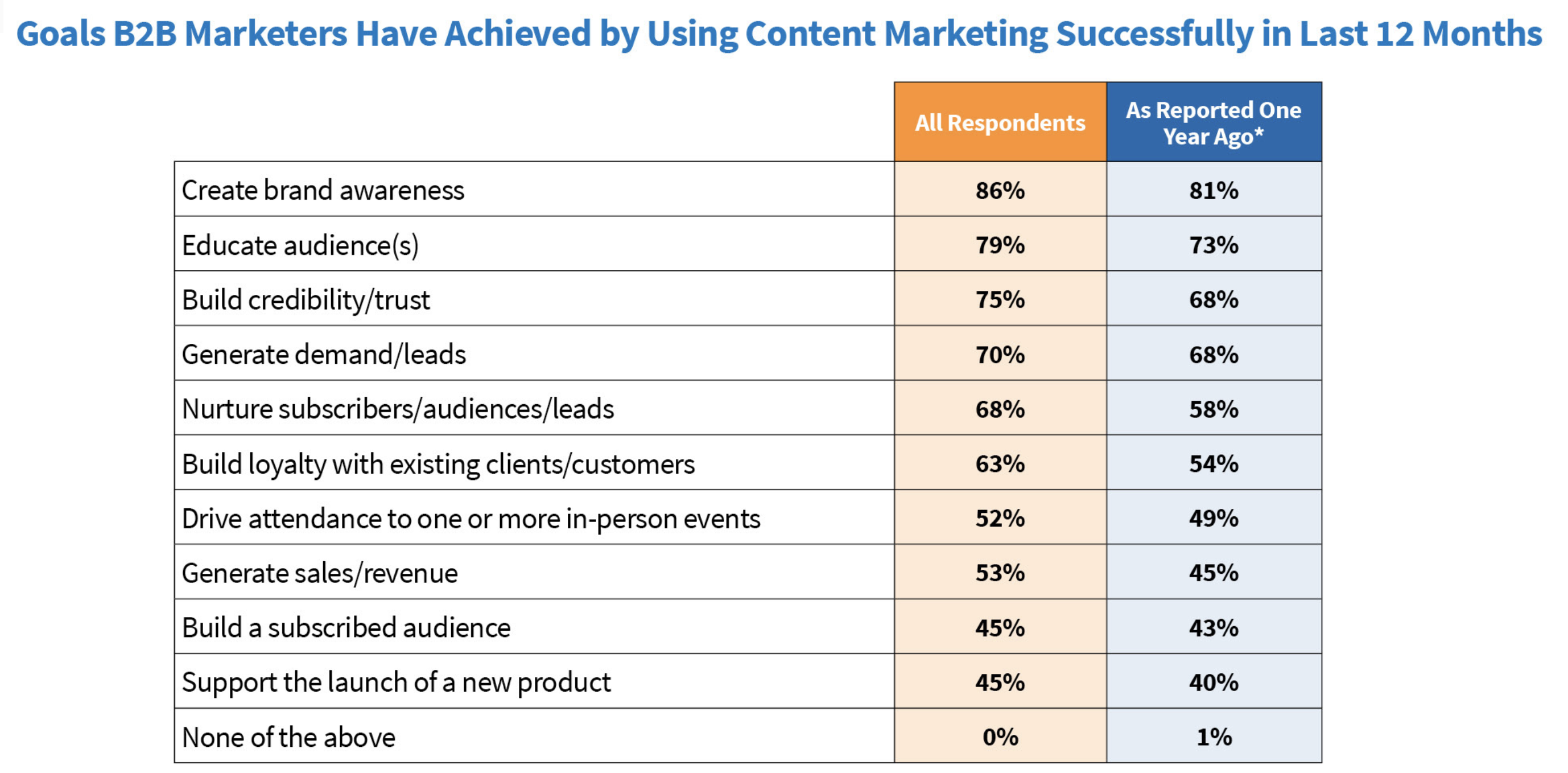Nearly half (43%) claimed that it had.
With both professionals and consumers continuing to adjust to remote ways of working and living – potentially for the long haul – now is a prime opportunity to explore how content is being formulated, created and shared. And perhaps, more importantly, ask whether it is intrinsically linked to the top-level objectives the business has set. What is High Performing Content? This is something we consistently focus much of our clients’ time on and we call it, High Performing Content.While most companies have a content plan, a vast number of businesses are falling short on the performance of their content. The Content Marketing Institute’s B2B Content Marketing 2020 report revealed that marketers successfully use content to nurture, build loyalty and generate sales. Some 75% of marketers reported successfully using content to build credibility. Consistent and credible content from a brand can help build both trust and reputation.
Does your content perform at this level? When High Performing Content is created, businesses unlock a multitude of benefits connected to both growth and conversion.
So, what exactly is High Performing Content? Are you confident that your content can be classified as High Performing? Perhaps, more importantly, do you even know how you can tell?
What makes High Performing Content?
High Performing Content is, in short, content that delivers for your business. We mean, really delivers. A channel or a piece of content can, on the surface, appear strong but when you analyse it further, the reality may be very different. A UK-based business might have 30,000 unique monthly visitors to their blog. However, with the global nature of online, 60% of those reading it might be dotted across the world. Furthermore, their core customer might be 35-44 but what if the remaining 40% are in the 18-24 category? Suddenly, their 30,000 blog readers seem almost irrelevant. Content will inevitably fail to perform if it doesn’t consist of the type of information that has the ability to connect with relevant audiences for their business. A classic example of content that doesn’t hit that high performing mark is when organisations simply try to do too much. When ideas and demands are coming to the marketing team from all angles and there is no real way to qualify in and out what should be published, the business tends to deliver a huge variety of topics and themes. The result? A confused reader, superficial traffic that is hard to convert and mis-leading data.Are you creating Content for Content’s sake?
We often talk about content for content’s sake; ticking boxes to meet a plan. But with so much information out there, it is not enough to simply produce the content – churning out an industry report, customer magazine or weekly insight for the sake of regularity. Failing to connect with the right audience – segmenting your data, targeting it with the right message at the right time and really tailoring your content – can have a hugely detrimental impact on its performance. Other contributing factors include, most obviously topic, as well as format and the value of the channels used to seed the content out. Neglecting to consider these will increase the chance of content missing the target and getting lost, resulting in little tangible benefit to the business. Ultimately, content is a tool that should be used to drive conversion. If it fails to draw customers into the sales funnel or to add value in the longer term, is it even worth producing?Why is content beneficial?
The benefits of achieving High Performing Content are vast. The previously mentioned B2B Content Marketing 2020 report showed that reliable content is an effective way to boost conversation, positively influencing purchasing decisions. In fact, more than half (53%) reported generating sales through content marketing, demonstrating its true value when done in the right way.
How can you tell your content is hitting the mark?
Creating High Performing Content is systematic and process-driven. First and foremost, the content needs to derive from an audience ‘need’. All too often, we see content based on what the business thinks is important, or solely based on vague business objectives. The ideas stem from the top down and not from the customer up. This isn’t high performing. We empower our clients to think of content as a service; you are filling a knowledge gap in an area of expertise. A service that your audience doesn’t need, has zero benefit to either party. Fully understanding your customer profiles is the only way to find resonance with them. This is one of the toughest parts of the process because often it can involve abandoning what you think and adopting a new norm. We frequently support businesses in finding out what the ‘need’ looks like for the people they want to engage. If that need doesn’t match the content they’re creating, it fails. Why? Because it’s not authentic and genuine.What are you famous for?
It always comes back to this question: What are you famous for? We consult with companies daily and can honestly say that very few manage to match up the vision and values of the business with the frontline content they create. It’s not that the two elements aren’t in place (vision and values, then content), it’s that they are not aligned. As a starting point, we drill down and identify the vision and values of the brand, and then we take these and create a bespoke Content Matrix. This Matrix is the basis for every piece of content that the business goes on to produce. Is there a Content Matrix at your business? If you want to see how these work in practice, drop us an email here and we’ll set up a call to show you!The value of the Matrix
Servicing a need is just the first step. Whatever content you produce must align with your brand. Once you have an idea that works, that is the time to cross-check it against your wider objectives. After all, content should be mutually beneficial. Take our own content and our own Matrix. At the very top we have ‘High Performing Content’. This means everything we create and share must be rooted in this term. It is what we are famous for and what we want to be reinforcing with our own audiences. Beyond that we start to use other words and terms that will influence how we talk about High Performing Content. We consider each idea around High Performing Content in the following way: Growth, Brand, Audience and Data.- How is the content going to grow the business – will it nurture subscribers, audiences and/or leads?
- Does the content reflect the brand – does it feed directly back to the wider vision and values of the business?
- Who is the exact audience that you are targeting – is this blanket communication or are you addressing a specific segment?
- What data are you using to track and evaluate your results – is this a true and accurate reflection of performance?
Finding a true north
Having an agreed Content Matrix, which every piece of content feeds into, ensures that all stakeholders across the business are aligned. This is hugely valuable for those working in companies where departments have a tendency to operate in silos. The Matrix is the one ‘true north’. If everyone works to the same base values, it ensures a much more cohesive communications schedule; a united focus.
Qualifying in and qualifying out ideas for content becomes easy.
You hold it up against the Matrix and either say, ‘yes this is high performing content for us’, or ‘no, it doesn’t fit the agreed Matrix’.
It can be challenging but stripping everything back and starting from scratch can often provide the necessary clarity.
We hope this provides useful insight and enables you to reflect on your own content.
Deciphering whether it is high performing, is the first step to bettering it. The following questions are key to finding the answer.
- Does the vision of the business adequately serve the short and long-term objectives?
- Are you segmenting your audiences and speaking to them in different ways?
- What is the brand famous for and are you consistently reinforcing this?
- What basic ‘needs’ does your audience have and are you addressing them?

